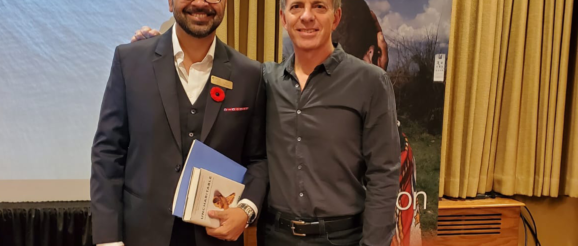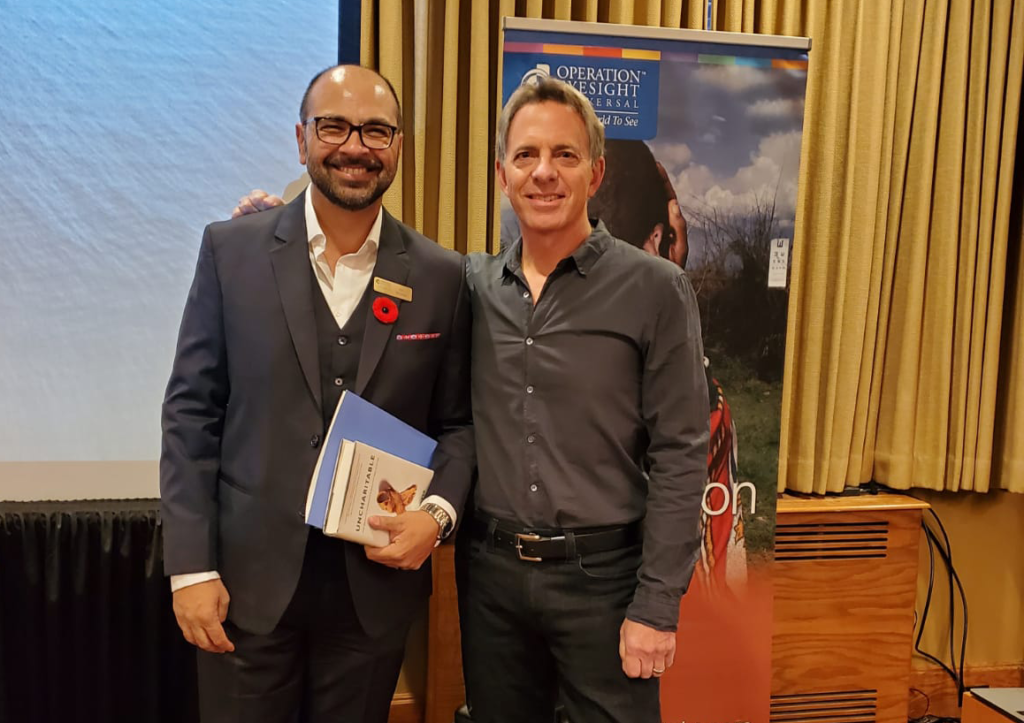Creative Impact – risk-taking and innovation for the charitable sector


Last month, Operation Eyesight hosted a group of philanthropists as part of an educational series featuring Dan Pallotta – author of “Uncharitable: How Restraints on Nonprofits Undermine Their Potential.” The Stanford Social Innovation Review said that the book “deserves to become the nonprofit sector’s new manifesto,” and we couldn’t agree more.
Pallotta touched on a challenging subject many nonprofits face as we raise funds – administration costs. Pallotta asserts that for nonprofits to realize their full potential and make the greatest difference for their beneficiaries, they must be allowed to use the same strategies and tactics as the for-profit sector. These include activities such as investing in marketing and advertising and paying competitive wages to individuals who bring significant value to the organization. Furthermore, Pallotta argues that the public must get over its fixation on fundraising costs and overhead, as they are not accurate measures of the impact an organization is achieving.
A striking example of this was shown using pie charts to compare the overhead and program expenses for two different soup kitchens. Soup Kitchen A had less than 10 percent overhead, and Soup Kitchen B had 30 percent. A typical donor would look at the two pie charts and choose to donate to the soup kitchen with the lower overhead so “more money goes towards the cause.” However, Pallotta demonstrates how these pie charts are misleading. If the donor knew that Soup Kitchen A served meals that were not nutritious and only served 50 clients a day, while Soup Kitchen B fed a complete balanced meal, reached 200 clients a day, and has a program where clients could purchase fresh fruits and vegetables at reduced rates – which would they then choose? It is evident that a simple pie chart does not provide enough information for a donor to make an informed decision on how to spend their charitable dollars.
For the corporate sector, investing in “overhead,” by providing competitive salaries to attract the right people and spending money in marketing and advertising, is the status quo. This allows companies to become more profitable, maximize operational efficiencies, and improve their triple bottom line. However, if the same were applied to nonprofits, there is much scrutiny. The side of the story that isn’t told, and what Pallotta knows to be true, is that by allowing and perhaps even mandating charities to invest smartly in overhead, they can not only increase their value for money but also scale their impact. By doing so, they will improve more lives, build more resilient communities, and become more sustainable.
With that premise, we invite donors and prospective donors to get to know us. We pride ourselves on being focused on delivering evidence-based results and measurable impacts in the work we do. We have been recognized for this by Charity Intelligence, as one of the Top 10 Impact Charities of 2018. They measure impact by determining the return for every dollar donated, highlighting charities that accomplish more with the donations they receive.
Currently, we are introducing new ways of demonstrating our impact, including a new approach to storytelling and showing our impact through videos. We are using the UN’s sustainable development goals as a framework, allowing us to work side-by-side with governments and non-governmental organizations around the world to achieve a common purpose.
We look forward to building lasting relationships with our new and existing donors, as we move forward with exciting new initiatives and as we grow together to transform more lives.
The post Creative Impact – risk-taking and innovation for the charitable sector appeared first on Operation Eyesight.
